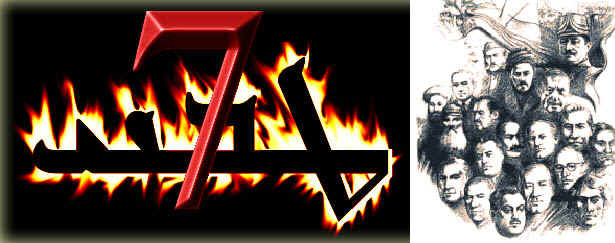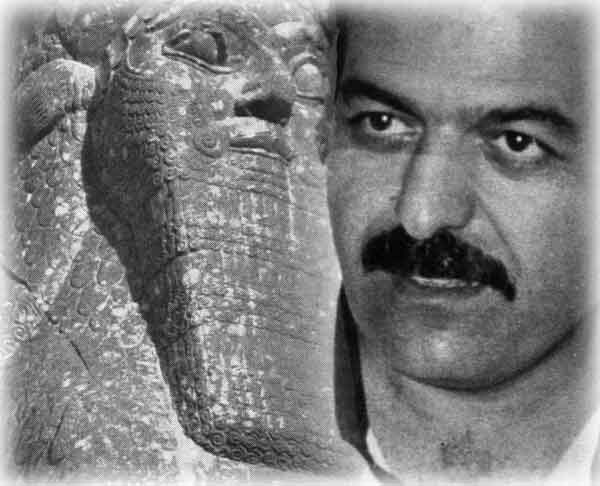 Assyrian American National Federation,
Assyrian American National Federation,


|
|
A dispute over hereditary succession and church calendars caused the metropolitan of the Church of the East in India (known there as the Chaldean Syrian Church) to break away in 1964. The rift was healed only in 1995, thanks to H. H. Mar Dinkha IV, though a small group (the Ancient Church of the East) remains separated from the main body of the Church of the East.
Following this action church leaders called for a council to decide the future of the patriarchate. The council was scheduled for November 19, 1975, but was rescheduled for January 5, 1976. In the meantime, on November 6, 1975, the patriarch was shot and killed at the door of his home in San Jose, California, by David Ismail[1]. According to records of Ismail's trial, Ismail indicated that he was upset over the patriarch's marriage; however, the records also suggest links between Ismail and persons who may have been angry at the patriarch's refusal to push for an Assyrian homeland. When the church council finally met in London on October 17, 1976, it elected Mar Dinkha IV (who had been bishop of Tehran) as patriarch

March 3, 1918: The Assassination of Mar Benyamin Shimun

The Assyrian Genocide (also known as Sayfo or Seyfo; Aramaic: ܩܛܠܐ ܕܥܡܐ ܐܬܘܪܝܐ or ܣܝܦܐ, Turkish: Süryani Soykırımı) was committed against the Assyrian population of the Ottoman Empire near the end of the First World War by the Young Turks.[1] The Assyrian population of northern Mesopotamia (Tur Abdin, Hakkari, Van, Siirt region in modern-day southeastern Turkey and Urmia region in northwestern Iran) was forcibly relocated and massacred by Ottoman (Turkish and Kurdish) forces between 1914 and 1920 under the regime of the Young Turks.[2] This genocide is considered by some scholars to be a part of the same policy of extermination as the Armenian Genocide and Pontic Greek Genocide [3].
The Syriac name Qeṭlā ḏ-‘Amā Āṯûrāyā (ܩܛܠܐ ܕܥܡܐ ܐܬܘܪܝܐ), which literally means "killing of the Assyrian people", is used by some groups to describe these events. The word Qṭolcamo (ܩܛܠܥܡܐ) which means Genocide is also used in Assyrian diaspora media. Other groups, especially those that do not wish to use the ethnic identifier Assyrian, refer to the genocide as Saypā (ܣܝܦܐ), pronounced Sayfo in the West Syriac dialect, meaning "sword". It is not known how many died during the event, but estimates go from 500,000-750,000.[4]
Dr. Freydun Bet-Oraham Atturaya (Freydun the Assyrian) (1891 – 1926) was an Assyrian physicist born in the town of Charbash in the district of Urmia in Iran. He was sent by his father to live with an uncle in Tbilisi, then in the Russian Empire, and studied medicine there. He worked as a medical doctor for the Russian Army as soon as he graduated in 1915. He was later transferred to the Russian Forces in Iran as a medical and political officer, and established an Assyrian National Committee in Urmia, sending 250 young Assyrian men to Russia for military training.
After the February 1917 Russian revolution, Dr. Freydun Atturaya, Rabbi Benjamin Bet Arsanis and Dr. Baba Bet Parhad founded the first Assyrian political party, the Assyrian Socialist Party. Dr. Atturaya completed in April 1917 an Urmia Manifesto of the United Free Assyria in Assyrian Neo-Aramaic, stating in it that "the goal of the free Assyrian unity is to establish in the future the national self-governing in the regions like Urmia, Mosul, Turabdin, Nisibin, Jezira, Julamaerk along with the reunification with the great free Russia in terms of economic and military agreements".[1]After 1918, the Assyrian National Council which he ran moved to Tbilisi and he was ousted, then imprisoned, under suspicion of being a British spy. After a failed attempt in 1921 to convince the Soviet Foreign minister to repatriate Assyrians to Urmia and Salamis, he married in 1922, and subsequently had two children. He was imprisoned again in 1924 under the accusation of being "a fanatic Assyrian nationalist". He died in prison in 1926, probably poisoned or hanged.
Alongside his military and political career, he wrote poems and founded an Assyrian magazine and an Assyrian library.
Agha Petros Elia of Baz (Syriac: ܐܓܐ ܦܜܪܘܣ; born 1 April 1880, died 2 February 1932) was a military general during World War I. An ethnic Assyrian,[1] Petros was born in the Lower Baz village, Ottoman Empire. He completed his elementary education in his village school and went to Urmia to attend one of the European missionary schools. He spent three years in the United States. He was well learned in the Assyrian, Turkish, Arabic, French, Persian, English, and Russian languages. Due to his language skills, he was employed as secretary by the Turkish Consulate in Urmia. In 1909 he was appointed Turkish Consul. He was exiled by British authorities in what is now Iraq and resided in Toulouse, France. He participated in the League of Nations Peace Conference, October 26, 1923. He was poisoned and died in France on February 2, 1932.
Agha Petros defeated the Turks in Sauj Bulak and drove them back to Rowanduz.[citation needed] Agha Petros had no real control over Assyrians or Armenians, and was indeed greatly mistrusted by many of them. There was deep disunion in the ranks, instead of posting a force to contain the Turks who he had defeated[citation needed] he moved his forces to Sain Kala which reached seven days after the British detachment retired.
The Simele massacre (Assyrian: ܦܪܡܬܐ ܕܣܡܠܐ: Premta d-Simele) was the first of many massacres committed by the Iraqi government during the systematic targeting of Assyrian Christians of Northern Iraq in August of 1933. The term is used to describe not only the massacre of Simele, but also the killing spree that continued among 63 Assyrian villages in the Dohuk and Mosul districts that led to the deaths of an estimated 3,000 innocent Assyrians.[1][2] The Assyrian people at the time were emerging from one of the darkest periods of their history, for, during the Assyrian genocide at the end of the World War I, an estimated two-thirds of their population was massacred by Ottoman Turks and Kurds.[3]
Francis Shabo Margret George Youbert Yousep Youkhana



Francis Shabo (a member of the Northern Iraqi Parliament and a member of the Assyrian Democratic Movement) assassinated in Dohuk.
Many believe that the Assassination was caused by his activism in promoting unity among the various Assyrian religious groups
eg. Chaldean, Nestorian, and Syriac) as well as his active participation in the Investigative committee on resolving Assyrian land and village expropriation.













No comments:
Post a Comment